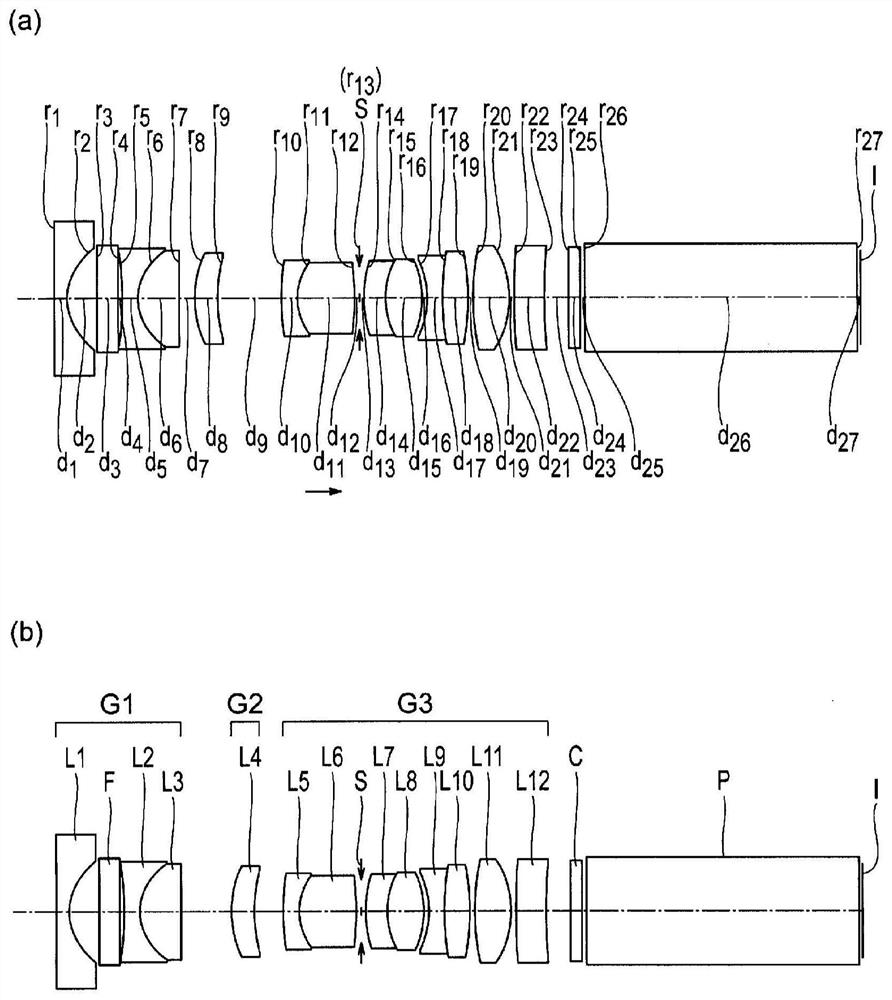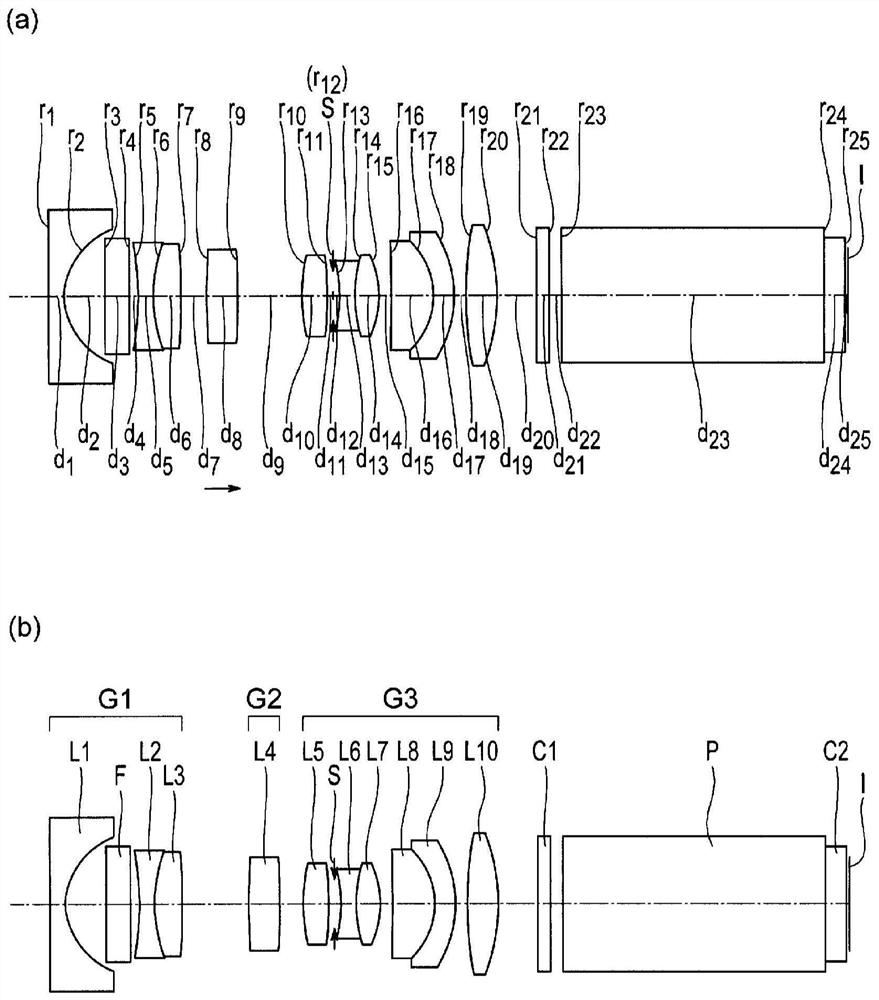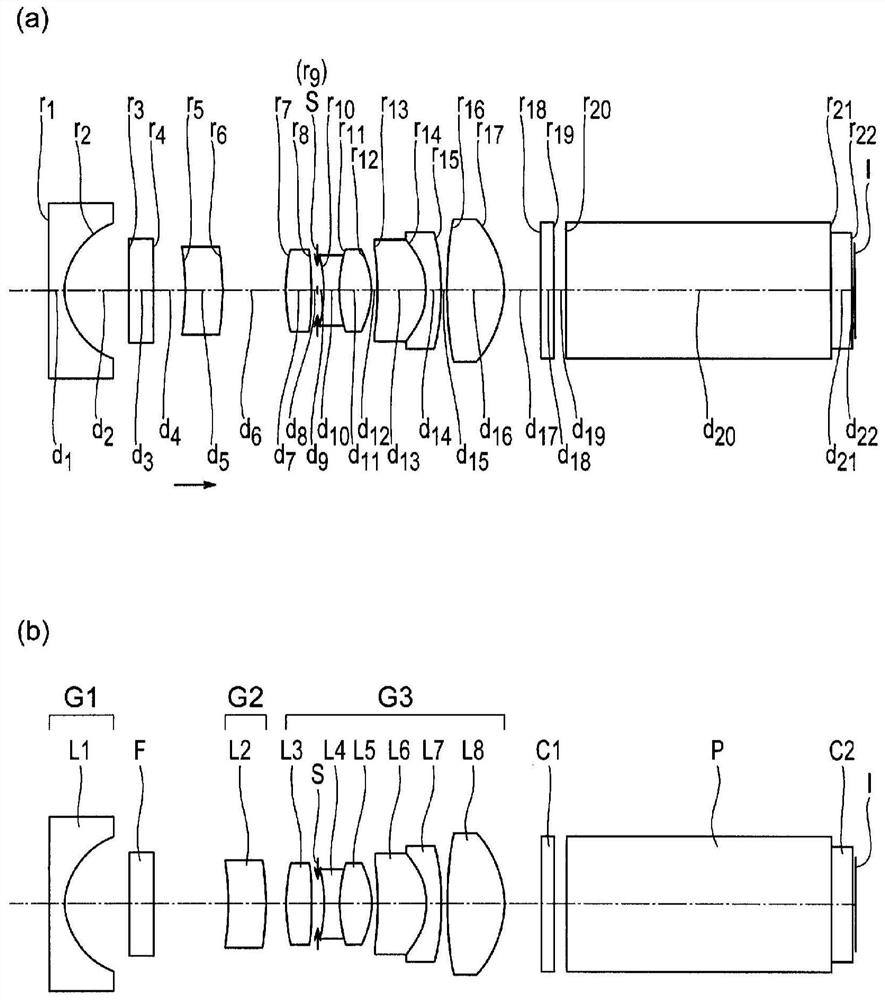Wide-angle optical system and imaging device using same
A wide-angle optical system and optical surface technology, applied in the field of wide-angle optical system and camera device, can solve the problems of difficult optical system movement, actuator size and output limitation, etc.
- Summary
- Abstract
- Description
- Claims
- Application Information
AI Technical Summary
Problems solved by technology
Method used
Image
Examples
Embodiment 1
[0371] The wide-angle optical system of Example 1 includes a first lens group G1 having negative refractive power, a second lens group G2 having positive refractive power, and a third lens group G3 having positive refractive power in order from the object side.
[0372] The first lens group G1 includes a plano-concave negative lens L1, a double-concave negative lens L2, and a positive meniscus lens L3 with a convex surface facing the object side. The biconcave negative lens L2 is cemented with the positive meniscus lens L3.
[0373] The second lens group G2 has a positive meniscus lens L4 whose convex surface faces the object side.
[0374] The third lens group G3 has a negative meniscus lens L5 with a convex surface facing the object side, a biconvex positive lens L6, a negative meniscus lens L7 with a convex surface facing the object side, a biconvex positive lens L8, a biconcave negative lens L9, and a biconvex positive lens. L10, a biconvex positive lens L11, and a negati...
Embodiment 2
[0378] The wide-angle optical system of Example 2 includes a first lens group G1 having negative refractive power, a second lens group G2 having positive refractive power, and a third lens group G3 having positive refractive power in order from the object side.
[0379] The first lens group G1 has a plano-concave negative lens L1, a bi-concave negative lens L2, and a bi-convex positive lens L3. The biconcave negative lens L2 is cemented with the biconvex positive lens L3.
[0380] The second lens group G2 has a positive meniscus lens L4 whose convex surface faces the object side.
[0381] The third lens group G3 has a biconvex positive lens L5, a biconcave negative lens L6, a biconvex positive lens L7, a positive meniscus lens L8 with a convex surface facing the image side, a negative meniscus lens L9 with a convex surface facing the image side, and a biconvex positive lens. Lens L10.
[0382] The biconcave negative lens L6 is bonded to the biconvex positive lens L7. The po...
Embodiment 3
[0385] The wide-angle optical system of Example 3 includes a first lens group G1 having negative refractive power, a second lens group G2 having positive refractive power, and a third lens group G3 having positive refractive power in order from the object side.
[0386] The first lens group G1 has a plano-concave negative lens L1.
[0387] The second lens group G2 has a positive meniscus lens L2 whose convex surface faces the image side.
[0388] The third lens group G3 has a biconvex positive lens L3, a biconcave negative lens L4, a biconvex positive lens L5, a positive meniscus lens L6 with a convex surface facing the image side, a negative meniscus lens L7 with a convex surface facing the image side, and a biconvex positive lens. Lens L8.
[0389] The biconcave negative lens L4 is bonded to the biconvex positive lens L5. The positive meniscus lens L6 is bonded to the negative meniscus lens L7.
[0390] A filter F is arranged between the first lens group G1 and the second...
PUM
 Login to View More
Login to View More Abstract
Description
Claims
Application Information
 Login to View More
Login to View More - R&D
- Intellectual Property
- Life Sciences
- Materials
- Tech Scout
- Unparalleled Data Quality
- Higher Quality Content
- 60% Fewer Hallucinations
Browse by: Latest US Patents, China's latest patents, Technical Efficacy Thesaurus, Application Domain, Technology Topic, Popular Technical Reports.
© 2025 PatSnap. All rights reserved.Legal|Privacy policy|Modern Slavery Act Transparency Statement|Sitemap|About US| Contact US: help@patsnap.com



